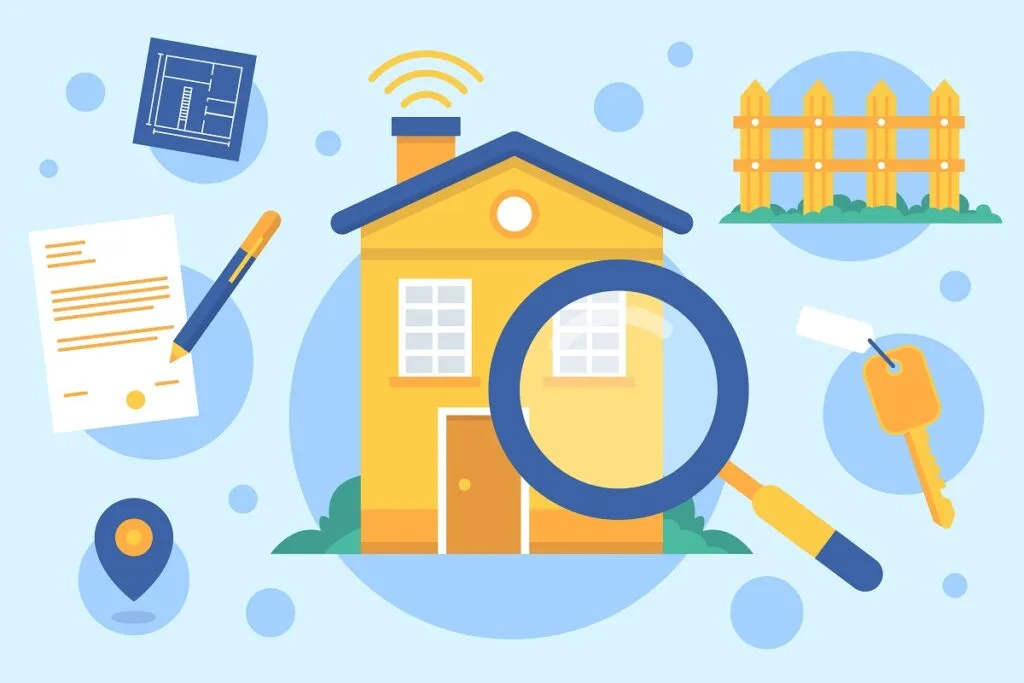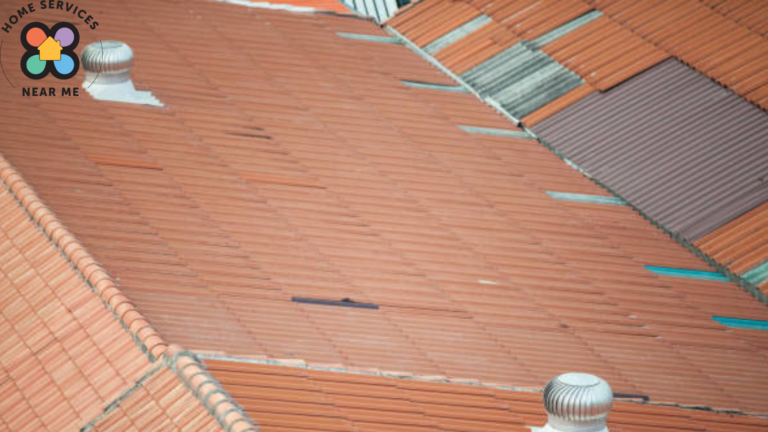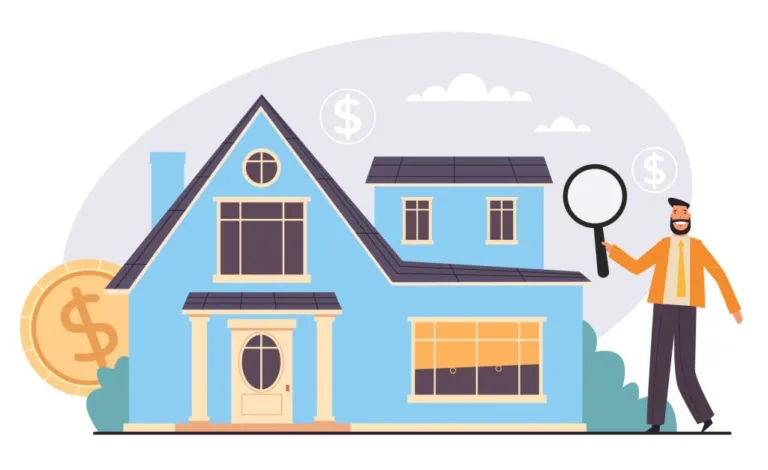The Importance of Home Inspection in Real Estate Transactions
Buying a home is one of the biggest investments most people will ever make. When you’re spending hundreds of thousands of dollars on a property, you want to make sure you know exactly what you’re getting into. This is where a home inspection comes in.
A home inspection service in Orange County is a detailed examination of the physical condition of a home, performed by a qualified home inspector. Having an inspection done on a home before finalizing a purchase is extremely important. Here’s why home inspections are so vital to real estate transactions.
What a Home Inspection Includes
A home inspection is intended to thoroughly evaluate the major systems, structures and components of a house. The goal is to identify material defects in the property.
Some of the major areas looked at in a home inspection include:
- Roof – The roof is inspected for damaged, worn or missing shingles/tiles, insufficient slope or drainage, and any evidence of leaks.
- Attic – The attic is checked for proper ventilation, insulation, water penetration and structural problems.
- Exterior – The home inspector looks at siding, windows, doors, decks, porches, trim, eaves, foundations and drainage. They check for cracks, rot, water damage or pest infestation.
- Structure – Walls, floors, ceilings, foundations and framing are all inspected for signs of structural failure or damage.
- Electrical system – The amperage and voltage ratings of the electrical system are checked along with inspecting wiring, outlets, GFCIs, breakers and panels.
- Plumbing – Pipes, fixtures, water pressure, functionality of drains, and water heating equipment are all reviewed.
- HVAC – The furnace, heat pump and central air are tested for proper operation and checked for leaks, corrosion or mold buildup.
- Appliances – Any appliances included in the purchase of the home are turned on to check functionality.
- Interior – Ceilings, walls, floors, windows, doors, railings, counters and cabinets are examined for damage and wear.
This list gives you an idea of the thoroughness of a professional home inspection. Inspectors will provide a detailed report with photos outlining any issues or areas of concern they find.
Catching Major Defects and Safety Hazards
One of the biggest benefits of getting a home professionally inspected before closing on a property is identifying defects. An inspection can uncover problems with the home that you may not notice on your own.
Some major issues that can be revealed include:
- Structural problems – Issues with the foundation, floors, walls, ceilings or roof structure that affect structural integrity.
- Electrical issues – Improper wiring, lack of grounding, overloaded circuits or faulty breaker panels.
- Plumbing leaks – Leaking pipes, corroded pipes, or water pressure issues.
- Heating and cooling equipment defects – Furnace, boiler or AC issues that can lead to carbon monoxide leaks, fire hazards or even equipment failure.
- Roof leaks – Faulty shingles, flashing problems or damaged gutters that allow water intrusion.
- Pest infestation – Termites, carpenter ants or other pests feasting on the home’s structure.
- Mold issues – Excess moisture leading to hazardous mold taking hold in hidden areas.
- Fire hazards – Concerns like lack of fire stopping, improper electrical work, missing GFCIs and insufficient smoke detectors.
Catching any of these serious home defects before purchase could potentially save you thousands of dollars in future repair costs. You may even be able to renegotiate the sale price to account for expensive problems uncovered by the inspection report.
Inspections can also reveal more minor maintenance issues that will need attention. Things like worn roofs, outdated electrical panels or inefficient HVAC equipment can all be addressed proactively rather than waiting until problems arise in the future.
Knowing about defects in advance allows you to make informed decisions and feel confident about any costly repairs or upgrades needed in the home.
Providing Peace of Mind
There’s so much uncertainty involved in buying a home. Unlike newer construction, you don’t always know the full history of an existing property.
Hiring a trained home inspector allows you to gain objective insights into the home’s condition from an experienced professional. Rather than wondering and worrying about what issues may exist, an inspection report eliminates doubts by providing documentation on the home.
A clean inspection report that doesn’t identify any major concerns can provide huge peace of mind. You’ll feel more comfortable moving forward knowing that costly surprises are less likely to pop up later.
Even if problems are revealed, just having documentation of the defects takes away some anxiety. You can properly address issues instead of buying the home with nagging worries about what might be found later.
Owning a home also means being responsible for maintenance and repairs. An inspection lets you know what to watch out for, so you can take a proactive approach to upkeep. Knowing which areas may need repairs or replacement in the coming years allows for better financial planning.
Overall, a home inspection service in Orange County provides crucial information you can’t get just from a tour or your own limited examination as a buyer. The detailed insights give you confidence in your investment and allow you to feel at ease in your new home.
Helping Inform Negotiations
Home inspections aren’t just useful to the buyer. The results can also be leveraged in making a strong offer and negotiating the purchase price for a home.
If the inspection uncovers significant issues, it puts you in a position to renegotiate the contract. Based on the cost estimates to fix problems found, you may ask the sellers to reduce the sale price or cover repairs themselves.
Even minor issues like an aging roof or outdated electrical panel could potentially get you a few thousand dollars shaved off the price. The sellers are much more willing to negotiate when you have the objective inspection documentation to back up requests for credits or repairs.
In a competitive market, a pre-offer inspection can help strengthen your bid on a popular property. If you have the home fully inspected before making an offer, you can waive inspection contingencies in the contract. This makes your offer more appealing to sellers.
You take on more risk by waiving the inspection contingency. But in a sellers market, it might be necessary to compete. Having the inspection already done allows you to make that move from a position of knowledge rather than blind risk.
Either way, an inspection supports negotiations by validating your requests with evidence of needed updates or repairs. Rather than general buyer demands, you have specific issues backed by an unbiased third-party report.
Well-documented requests make reasonable concessions from the seller more likely. The inspection gives you more leverage in making a deal on your terms.
Identifying Home Inspection Issues Early On
In general, it’s always better to identify problems sooner rather than later when buying a home. Finding issues early allows more time to address them properly, through negotiations, credits or requiring the sellers to repair problems before closing.
Once you close on a property, problems become your responsibility as the new homeowner. If issues were missed because you waived the inspection contingency, you take on added costs.
By inspecting before an offer is even made, any major red flags can surface immediately and prevent you from buying a problem property. Minor issues can be addressed upfront as well.
Booking an inspection far ahead of closing also builds extra time into the process if repairs are needed. You don’t want to find a structural defect a week before closing and scramble to take care of it.
Acting proactively keeps you from having to back out of a deal and restart the home search. Taking care of inspection findings early keeps the transaction moving smoothly.
An ounce of prevention truly pays off when buying real estate. Knowing a home’s condition from the start prevents headaches and extra expenses down the road.
Choosing the Right Home Inspector
Not all home inspectors are created equal when it comes to skill and expertise. The experience and training of the inspector makes a big difference in the thoroughness of the inspection – and in turn the usefulness of the report they provide.
Characteristics to look for in picking the best home inspector include:
- Proper certifications – A license from a reputable inspector certification program like the American Society of Home Inspectors (ASHI) or International Association of Certified Home Inspectors (InterNACHI).
- Experienced professionals – Inspectors should have experience across different home types, ages and systems. Look for 5+ years of full time home inspection experience.
- Strong local knowledge – Understanding of local building codes, common materials in the area, soil types and other regional specifics.
- Advanced equipment – Usage of thermal imaging cameras, moisture meters and other high-tech tools to identify hidden issues.
- Good communicators – They should explain the process, be responsive, answer questions fully and provide a comprehensive inspection report.
- Attention to detail – Evidence of thorough inspection practices in sample reports, and knowledge of what to look for in your specific home type.
- Positive reviews – Check independent sites like Yelp or the Better Business Bureau for customer reviews and ratings.
A careful vetting process helps identify well-qualified, attentive home inspectors who provide maximum value. The cost of an inspection is minor compared to the benefit of getting comprehensive insights into the property.
Be wary of deals from inexperienced inspectors offering bare bones inspections at cut rates. The savings often results in missed issues that can cost you much more down the line.
Inspecting a Newly Constructed Home
Home inspections are ideal for resale homes where the full history is unknown. But they can still provide value when purchasing newly built homes as well.
While builders conduct inspections throughout construction, it’s not a bad idea to have an independent inspection on a new build. Here are some benefits:
- Identify any issues missed by the builder like improper ventilation, grading problems, etc. before warranty expiration.
- Document any existing damage like cracks or flaws before move-in so it’s not attributed to you later.
- Check for things like adequate caulking, insulation, drywall flaws, dripping faucets and other finish issues.
- Verify major systems like HVAC and appliances are working properly when installed.
- Catch any deviations from plans like incorrect lighting or cabinetry.
- Review for compliance with building codes and energy efficiency requirements.
- Determine if the property boundaries match the plot plans provided.
While major structural issues are less likely on a new construction, inspections still provide third-party verification of the home’s finished condition. Having an unbiased assessment of the builder’s work can identify details that need correction.
Builders also appreciate the chance to repair legitimate issues before homeowners move in. It’s much easier to address problems proactively than handle complaints down the road.
A new construction inspection provides one last quality assurance check to ensure your satisfaction. It adds an extra layer of protection on a major purchase.
Don’t Waive Home Inspection Contingencies
In summary, home inspections deliver immense value for home buyers. They provide unbiased insights into a property’s condition that you simply can’t get on your own.
Identifying issues early allows you to negotiate repairs, account for upgrade costs, and avoid buying problem properties. Inspections bring peace of mind knowing that costly surprises will be minimized once you move in.
These benefits make home inspections well worth the relatively small expense. In the long run, the expense is insignificant compared to the financial protection and confidence gained.
In hot markets with bidding wars, the temptation may exist to waive inspection contingencies to make an offer more attractive. But forgoing an inspection is incredibly risky. The danger of undisclosed defects, safety hazards and exorbitant repair costs down the road just isn’t worth it.
Rushing into a purchase on a home without diligent inspection is one of the costliest mistakes a buyer can make. Don’t let the desire to win a bid cloud the sound judgment an inspection provides.
Home Inspection service in Orange County brings professional insight that every buyer needs to make a purchase with confidence. Don’t buy the proverbial “pig in a poke” – make sure to get the home thoroughly checked. The peace of mind and financial protection are well worth it!
The Home Inspection Process Step-By-Step
Now that you appreciate the immense importance of home inspections for real estate transactions, let’s look at the inspection process itself. What exactly should you expect?
Here is an overview of the typical home inspection sequence from start to finish:
Initial Consultation
- The inspection process starts with you contacting the inspector and scheduling an initial consultation.
- During this call, the inspector will go over what areas the inspection will cover, the average length, what you need to prepare, and your ability to accompany them during the inspection.
- Initial discussions also establish the age and type of home, any known issues, the scope of utilities being turned on, and any special areas of concern.
- You’ll also discuss the price for the inspector’s services upfront. Cost varies based on size of home, scope of inspection, and extras like thermal imaging. Expect to pay $300 – $500+ for a typical single family inspection.
- Scheduling a time when the home is vacant and all utilities are active is ideal. If the current owners occupy the home, their cooperation will be needed.
With a firm date set for the inspection, you’ll have a chance to prepare and even conduct your own cursory inspection ahead of time if possible. This allows you to observe some areas firsthand.
Arrival & Exterior Inspection
- The inspection itself usually takes 2 – 3 hours for a typical single family home. Larger luxury homes can take longer.
- The inspector will arrive on time and start with an exterior assessment. They will walk the roof, perimeter, and all sides of the home taking notes and photos. The lot and grading will also be reviewed.
- They will look for issues like drainage problems, cracked foundations, structural damage, rotting wood, pest infestation, and overall exterior condition.
You’re encouraged to accompany the inspector and ask questions, but don’t interfere with their process. Areas like the roof should only be accessed by the inspector for safety.
Interior Inspection
- Moving inside, the inspector will evaluate each room, operating appliances like dishwashers, stoves, and garbage disposals.
- They will confirm adequate water flow and drainage from fixtures, electrical outlets, and general interior condition.
- Doors, windows, walls, ceilings and floors are examined for damage and unusual wear. Issues like cracks or stains may indicate larger issues.
- The inspector will check behind walls if possible and look for previous water intrusion or unauthorized repairs.
Again, the inspector needs space and focus to conduct thorough testing. But the inspection is your opportunity to observe areas of the home you can’t access once the current owners have moved out.
Electrical, HVAC and Plumbing Systems
- Critical home systems are very closely evaluated during the inspection.
- For electrical, the amperage capacity, breakers, meter box, wiring, outlets, and any knob and tube wiring are reviewed.
- The functionality and condition of furnaces, boilers, central air, and heat pumps are tested.
- For plumbing, drain function, pipe corrosion, water pressure, water heaters, and sump pumps are inspected.
- Any potential issues like overloaded circuits, leaking pipes, or flood risk are called out.
Safety issues are a top priority in this phase. The inspector will look for any fire hazards, carbon monoxide leaks, or other dangers posed by faulty systems.
The Attic & Foundation
- The attic and basement/crawlspace reveal a lot about a home’s hidden condition.
- Insulation, ventilation, moisture incursion, and structural integrity are checked in the attic. Insulation and vapor barrier are reviewed in the basement.
- The foundation is examined for cracks, moisture damage, pest intrusion and signs of settlement.
Many hidden home issues first surface in the attic or foundation, so inspectors pay very close attention to these areas.
Wrapping Up
- Once the entire interior and exterior have been combed over, the inspection wraps up.
- The inspector will review major findings with you, and point out any photos taken of issues found.
- You’ll be able to ask any additional questions about areas of concern.
- Within 24 – 48 hours, you will receive the complete detailed inspection report identifying any issues found and overall condition.
The report will be your guide to repairs, renegotiations, or any actions needed based on findings.
While the inspection is fresh, make sure to jot down your own notes on issues you observed or want to follow up on. This allows you to compare your own findings to the inspector’s report.







